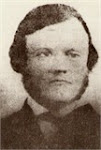
Monona is a relatively young community - the Village of Monona was only founded in 1938 and became a city in 1969 (and then only after a spirited legal battle that went all the way to the state Supreme Court).
We are extremely fortunate that local historian Dorothy Browne Haines has produced a high quality local history covering the period from 1938 to 1975. The book, Monona in the Making was published in 1999 by the Historic Blooming Grove Historical Society. The book can be purchased for $20 at city hall, the library, the Dean House and the Monona chamber of commerce. It really is an extraordinary resource with very high production values. A must read.
The Historic Blooming Grove web site at http://www.bloominggrovehistory.org/ has tons of great information about the area's history. (BTW, Monona was carved out the township of Blooming Grove). Check out the online tour of historic buildings. One of my favorities is Bungalowen at 5805-7 Winnequah Road (see photo). Become a member of the society!
Historic Madison has some excellent resources as well. Visit their web site at: http://danenet.wicip.org/hmi/ Some back issues of their Journal of the Four Lake Region are available for purchase. Volume XIII in 1996 includes a feature article by Dorothy Browne Haines titled Monona's Historic Heritage. That volume also includes a lengthy article by noted archaelogist on our Indian mounds and the man who saved them - Charles E. Brown. His article is available online along with other good articles on the mounds at the State Historical Society web page: http://www.wisconsinhistory.org/archaeology/mounds/index.asp The Indian mounds of the 4 Lakes region are an underappreciated world class archaeological resource literally in back yards.
One other phenomenal new resource available online are the digital archives of the original land survey notes also at the Wisconsin Board of Commissioners of Public Lands web page. The federal government surveyed the entire state of Wisconsin between 1833 and 1866. The surveyors' notes include observations of the type of trees, Indian trails, marshes, and soil quality. Monona is in T7N-R10E, sections 9 and 15-22. http://digicoll.library.wisc.edu/SurveyNotes/
















No comments:
Post a Comment